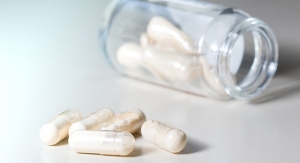07.31.20
A review published in the International Journal of Medical Sciences summed up a vast body of human clinical trials suggesting that vitamin C plays an important role in the prevention and management of metabolic syndrome, a cluster of often concurrent conditions including elevations in blood pressure and serum glucose, high triglycerides, excess body fat around the waist, and abnormal cholesterol levels, heightening a person’s risk for developing a number of serious and potentially fatal non-communicable diseases, such as heart attack, stroke, type 2 diabetes, and cardiovascular disease.
While the authors concluded that the mechanism of action has yet to be fully determined, they hypothesize that the anti-inflammatory and anti-oxidative properties of vitamin C likely play some role, and the significant reductions of metabolic syndrome induced in populations through better intakes of vitamin C in foods, beverages, and dietary supplements shows that it is important to maintain vitamin C concentration to reduce the risk, and potentially reverse, metabolic syndrome.
Our current medical recommendations for addressing metabolic syndrome include improving dietary patterns that are high in the consumption of refined carbohydrates and saturated fats, as well as avoiding foods and beverages containing high sugar and fat content, and maintaining aerobic exercise. Where these measures fail, the next step is often drug therapies or bariatric surgery. However, there has been a growing interest in anti-oxidative and anti-inflamatory agents for their potential use in prevention and therapy for metabolic syndrome.
Five animal studies that were reviewed, using rodents and rabbits, examined the effects of vitamin C alone as well as vitamin C within a cocktail of antioxidants. Each of the trials, which ranged from 4 weeks to 9 months, resulted in significant reductions to symptoms of obesity, hyperglycemia, hypertension, and levels of LDL cholesterol.
The findings were categorized by those which evaluated impacts on MetS by vitamin C intake, vitamin C circulation, and vitamin C supplementation. The researchers then some up the body of evidence surrounding the potential mechanism of action for vitamin C in the management of MetS.
Intake and Metabolic syndrome
26 human clinical trials were included in the review, each of which directly evaluated the role that vitamin C had in mitigating or preventing the onset of metabolic syndrome symptoms, representing populations consisting of thousands of participants.
Three large cross-sectional studies examined the direct association with metabolic syndrome, by the Korea National Health and Nutrition Examination Survey (KNHANES), which found that vitamin C intake was about 7% lower in the MetS group than the non-MetS group in a total of 22,671 adults. There was a pronounced decrease in waist circumference in individuals with high vitamin C intake, high physical activity, or both.. Vitamin C intake and physical activity combined also improved triglycerides, and both high physical activity and vitamin C intake were able to independently decrease the risk of MetS at similar rates.
Another Korean study also identified a correlation between MetS, and lower vitamin C intake after adjusting for cofounding factors such as age and sex in a pool of 221 patients.
A 2019 study provided an updated version of the evaluation of the association between 100% fruit juice consumption with risk factors for MetS. The study, conducted on over 10,000 participants, found that consumers of 100% fruit juice had higher intake of vitamin C compared to non-consumers, and, compared to non-consumers, had lower BMI, body weight, waist circumference, plasma glucose, and glycated hemoglobin. These fruit juice consumers experienced an overall decrease in overweight or obesity, raised waist circumference, and having MetS.
Circulating Vitamin C Concentration
Four cross-sectional studies involving participants in the National Health and Nutrition Examination Survey demonstrated that serum vitamin C concentration was associated with MetS outcomes, sourced from thousands of participants in adult and adolescent age groups. Additionally, it was found that vitamin C concentration decreased with increases in BMI and the number of components of MetS.
This phenomenon was corroborated by another cross-sectional study recruiting 85 Brazilian adults, 200 Nigerian adults, and two other case-control studies which found that vitamin C concentration was additionally able to lower blood pressure.
Two cross-sectional studies specifically on vitamin C concentration reported paradoxical results, however. They reported that among 46 participants diagnosed with MetS, no significant difference was observed in the plasma vitamin C concentration among individuals with and without MetS, nor were there any significant differences in other oxidative stress parameters, or antioxidant levels. The authors of these studies concluded that the discrepancy in results compared to other studies could have been due to the presence of other antioxidants besides vitamin C which could have counteracted the effects of vitamin C on oxidative stress.
Supplementation
A 2009 clinical trial conducted with 5,220 participants in France was the first to specifically examine vitamin C intake in the form of dietary supplements as opposed to other food and beverage sources. The participants were all free of MetS, and were followed for 7.5 years. While this first study found that there were no significant differences between supplementation and incident risk of MetS, participants who had higher measures of baseline vitamin C concentration had a lower MetS incident risk.
Two randomized controlled trails in examined the effects of vitamin C supplementation alone, as well as in combination with endurance physical activity. The group taking vitamin C alone experienced lower tryglyceride levels compared to the placebo, and resulted in a decreased BMI compared to the placebo group. The additional benefit of reduced blood pressure was observed when vitamin C supplementation was combined with 30 minutes of endurance exercise daily.
A 2019 trial found that a combination of zinc and vitamin C resulted in reductions of fasting blood glucose, tryglycerides, and systolic and diastolic blood pressure in a group of postmenopausal women. In the same year, another trial found that daily intake of orange juice resulted in higher concentrations of vitmaain C as well as improved MetS features, including decreased body weight, BMI, waist circumference, fat mass, visceral fat area, blood glucose, tryglycerides, and blood pressure. Only those who had a daily intake of orange juice also experienced lowered insulin and insulin resistance levels.
“The current evidence shows that high vitamin C intake, concentration, and supplementation are beneficial in reversing MetS except for a few studies,” the authors concluded. Because many of the randomized controlled trials involved the intake of other antioxidants besides vitamin C, “it is hard to justify whether the beneficial effects in improving MetS abnormalities were contributed by vitamin C or other compounds that present in the combined therapy. However, it can be suggested that the supplementation of vitamin C in combination with other antioxidants or exercise may provide synergistic effects in the management of MetS and its associated conditions.”
Oxidative stress, a hallmark of MetS, has been shown to have a number of causes, including diets high in fat and carbohydrates, as well as low physical activity, due to the state of overnutrition this causes. Overnutrition, and the resulting rise in fat content, causes enzymatic anti-oxidant processes to be inhibited. Another hallmark of MetS is chronic, low-grade inflammation, which is also experienced in people with obesity, but not MetS.
“In short, oxidative stress and inflammation are two interrelated conditions that ccharacterie the pathophysiology of MetS and its related manifestations. The rise in inflammatory mediators could be responsible for the increase in reactive oxygen species, and vice versa,” The authors wrote.
While the authors concluded that the mechanism of action has yet to be fully determined, they hypothesize that the anti-inflammatory and anti-oxidative properties of vitamin C likely play some role, and the significant reductions of metabolic syndrome induced in populations through better intakes of vitamin C in foods, beverages, and dietary supplements shows that it is important to maintain vitamin C concentration to reduce the risk, and potentially reverse, metabolic syndrome.
Our current medical recommendations for addressing metabolic syndrome include improving dietary patterns that are high in the consumption of refined carbohydrates and saturated fats, as well as avoiding foods and beverages containing high sugar and fat content, and maintaining aerobic exercise. Where these measures fail, the next step is often drug therapies or bariatric surgery. However, there has been a growing interest in anti-oxidative and anti-inflamatory agents for their potential use in prevention and therapy for metabolic syndrome.
Five animal studies that were reviewed, using rodents and rabbits, examined the effects of vitamin C alone as well as vitamin C within a cocktail of antioxidants. Each of the trials, which ranged from 4 weeks to 9 months, resulted in significant reductions to symptoms of obesity, hyperglycemia, hypertension, and levels of LDL cholesterol.
The findings were categorized by those which evaluated impacts on MetS by vitamin C intake, vitamin C circulation, and vitamin C supplementation. The researchers then some up the body of evidence surrounding the potential mechanism of action for vitamin C in the management of MetS.
Intake and Metabolic syndrome
26 human clinical trials were included in the review, each of which directly evaluated the role that vitamin C had in mitigating or preventing the onset of metabolic syndrome symptoms, representing populations consisting of thousands of participants.
Three large cross-sectional studies examined the direct association with metabolic syndrome, by the Korea National Health and Nutrition Examination Survey (KNHANES), which found that vitamin C intake was about 7% lower in the MetS group than the non-MetS group in a total of 22,671 adults. There was a pronounced decrease in waist circumference in individuals with high vitamin C intake, high physical activity, or both.. Vitamin C intake and physical activity combined also improved triglycerides, and both high physical activity and vitamin C intake were able to independently decrease the risk of MetS at similar rates.
Another Korean study also identified a correlation between MetS, and lower vitamin C intake after adjusting for cofounding factors such as age and sex in a pool of 221 patients.
A 2019 study provided an updated version of the evaluation of the association between 100% fruit juice consumption with risk factors for MetS. The study, conducted on over 10,000 participants, found that consumers of 100% fruit juice had higher intake of vitamin C compared to non-consumers, and, compared to non-consumers, had lower BMI, body weight, waist circumference, plasma glucose, and glycated hemoglobin. These fruit juice consumers experienced an overall decrease in overweight or obesity, raised waist circumference, and having MetS.
Circulating Vitamin C Concentration
Four cross-sectional studies involving participants in the National Health and Nutrition Examination Survey demonstrated that serum vitamin C concentration was associated with MetS outcomes, sourced from thousands of participants in adult and adolescent age groups. Additionally, it was found that vitamin C concentration decreased with increases in BMI and the number of components of MetS.
This phenomenon was corroborated by another cross-sectional study recruiting 85 Brazilian adults, 200 Nigerian adults, and two other case-control studies which found that vitamin C concentration was additionally able to lower blood pressure.
Two cross-sectional studies specifically on vitamin C concentration reported paradoxical results, however. They reported that among 46 participants diagnosed with MetS, no significant difference was observed in the plasma vitamin C concentration among individuals with and without MetS, nor were there any significant differences in other oxidative stress parameters, or antioxidant levels. The authors of these studies concluded that the discrepancy in results compared to other studies could have been due to the presence of other antioxidants besides vitamin C which could have counteracted the effects of vitamin C on oxidative stress.
Supplementation
A 2009 clinical trial conducted with 5,220 participants in France was the first to specifically examine vitamin C intake in the form of dietary supplements as opposed to other food and beverage sources. The participants were all free of MetS, and were followed for 7.5 years. While this first study found that there were no significant differences between supplementation and incident risk of MetS, participants who had higher measures of baseline vitamin C concentration had a lower MetS incident risk.
Two randomized controlled trails in examined the effects of vitamin C supplementation alone, as well as in combination with endurance physical activity. The group taking vitamin C alone experienced lower tryglyceride levels compared to the placebo, and resulted in a decreased BMI compared to the placebo group. The additional benefit of reduced blood pressure was observed when vitamin C supplementation was combined with 30 minutes of endurance exercise daily.
A 2019 trial found that a combination of zinc and vitamin C resulted in reductions of fasting blood glucose, tryglycerides, and systolic and diastolic blood pressure in a group of postmenopausal women. In the same year, another trial found that daily intake of orange juice resulted in higher concentrations of vitmaain C as well as improved MetS features, including decreased body weight, BMI, waist circumference, fat mass, visceral fat area, blood glucose, tryglycerides, and blood pressure. Only those who had a daily intake of orange juice also experienced lowered insulin and insulin resistance levels.
“The current evidence shows that high vitamin C intake, concentration, and supplementation are beneficial in reversing MetS except for a few studies,” the authors concluded. Because many of the randomized controlled trials involved the intake of other antioxidants besides vitamin C, “it is hard to justify whether the beneficial effects in improving MetS abnormalities were contributed by vitamin C or other compounds that present in the combined therapy. However, it can be suggested that the supplementation of vitamin C in combination with other antioxidants or exercise may provide synergistic effects in the management of MetS and its associated conditions.”
Oxidative stress, a hallmark of MetS, has been shown to have a number of causes, including diets high in fat and carbohydrates, as well as low physical activity, due to the state of overnutrition this causes. Overnutrition, and the resulting rise in fat content, causes enzymatic anti-oxidant processes to be inhibited. Another hallmark of MetS is chronic, low-grade inflammation, which is also experienced in people with obesity, but not MetS.
“In short, oxidative stress and inflammation are two interrelated conditions that ccharacterie the pathophysiology of MetS and its related manifestations. The rise in inflammatory mediators could be responsible for the increase in reactive oxygen species, and vice versa,” The authors wrote.




























